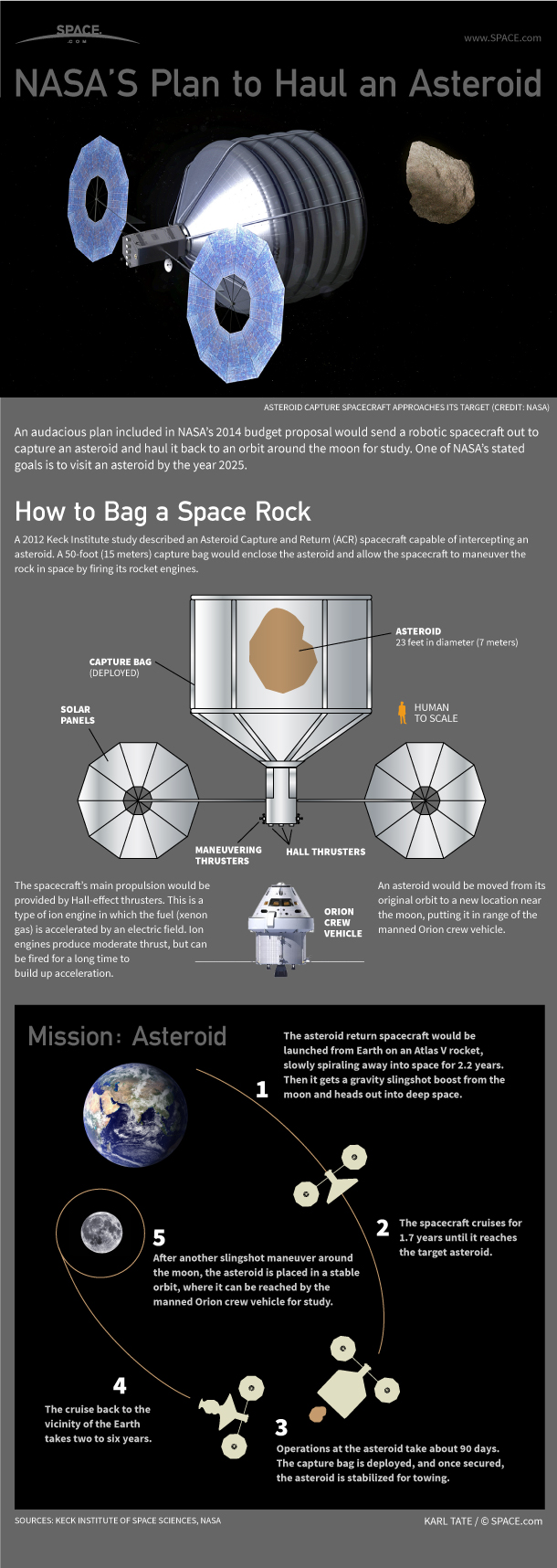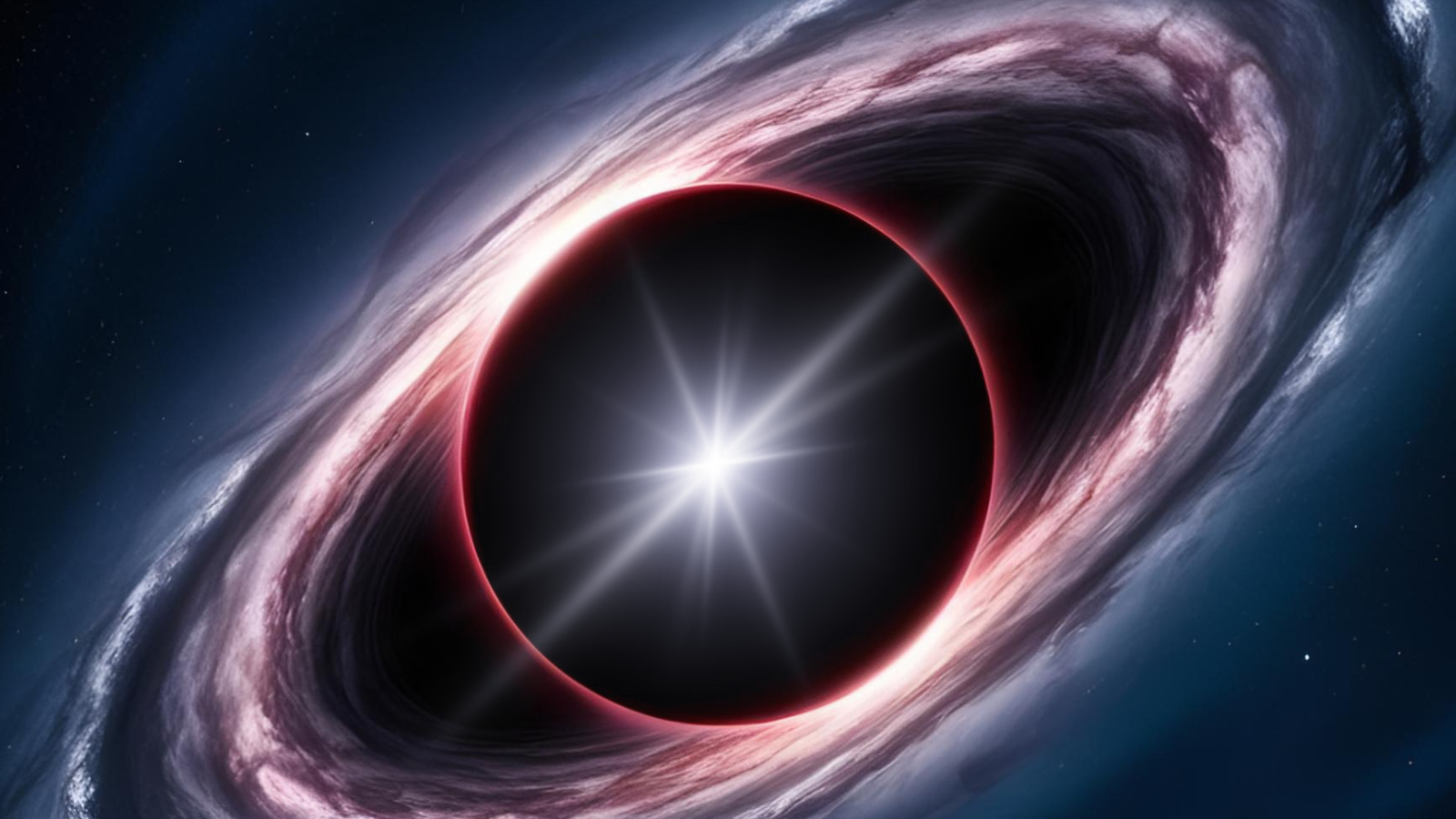How to Catch an Asteroid: NASA Mission Explained (Infographic)

An audacious plan included in NASA’s 2014 budget proposal would send a robotic spacecraft out to capture an asteroid and haul it back to an orbit around the moon for study. One of NASA’s stated goals is to visit an asteroid by the year 2025.
A 2012 Keck Institute study described an Asteroid Capture and Return (ACR) spacecraft capable of intercepting an asteroid. A 50-foot (15 meters) capture bag would enclose the asteroid and allow the spacecraft to maneuver the rock in space by firing its rocket engines.
The spacecraft’s main propulsion would be provided by Hall-effect thrusters. This is a type of ion engine in which the fuel (xenon gas) is accelerated by an electric field. Ion engines produce moderate thrust, but can be fired for a long time to build up acceleration. [NASA Asteroid-Capture Mission in Pictures]
An asteroid would be moved from its original orbit to a new location near the moon, putting it in range of the manned Orion crew vehicle.
Video Animation: How NASA's Asteroid Capture Mission Works
To move the asteroid, the spacecraft would first be launched from Earth on an Atlas 5 rocket, slowly spiraling away into space for 2.2 years. Then it gets a gravity slingshot boost from the moon and heads out into deep space.
The spacecraft cruises for 1.7 years until it reaches the target asteroid. Operations at the asteroid take about 90 days. The capture bag is deployed, and once secured, the asteroid is stabilized for towing.
The cruise back to the vicinity of the Earth takes two to six years. After another slingshot maneuver around the moon, the asteroid is placed in a stable orbit, where it can be reached by the manned Orion crew vehicle for study.
- Asteroid Basics: A Space Rock Quiz
- Obama Proposes NASA Budget For 2014 and Beyond | Video
- NASA's Space Exploration and Tech Goals for 2014 (Photos)
Follow us @Spacedotcom, Facebook and Google+.
Join our Space Forums to keep talking space on the latest missions, night sky and more! And if you have a news tip, correction or comment, let us know at: community@space.com.
Get the Space.com Newsletter
Breaking space news, the latest updates on rocket launches, skywatching events and more!

Karl's association with Space.com goes back to 2000, when he was hired to produce interactive Flash graphics. From 2010 to 2016, Karl worked as an infographics specialist across all editorial properties of Purch (formerly known as TechMediaNetwork). Before joining Space.com, Karl spent 11 years at the New York headquarters of The Associated Press, creating news graphics for use around the world in newspapers and on the web. He has a degree in graphic design from Louisiana State University and now works as a freelance graphic designer in New York City.
